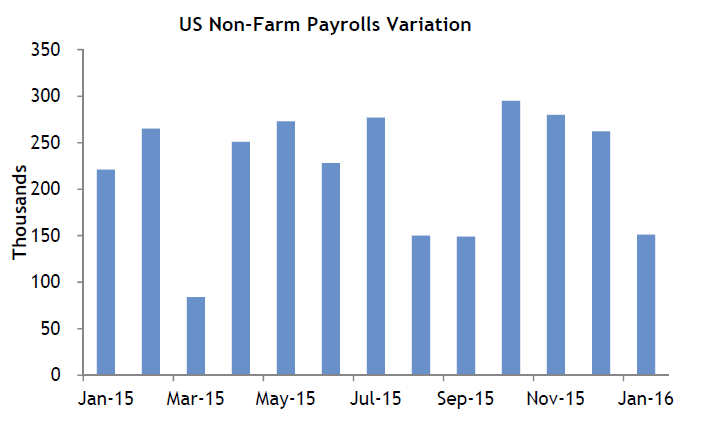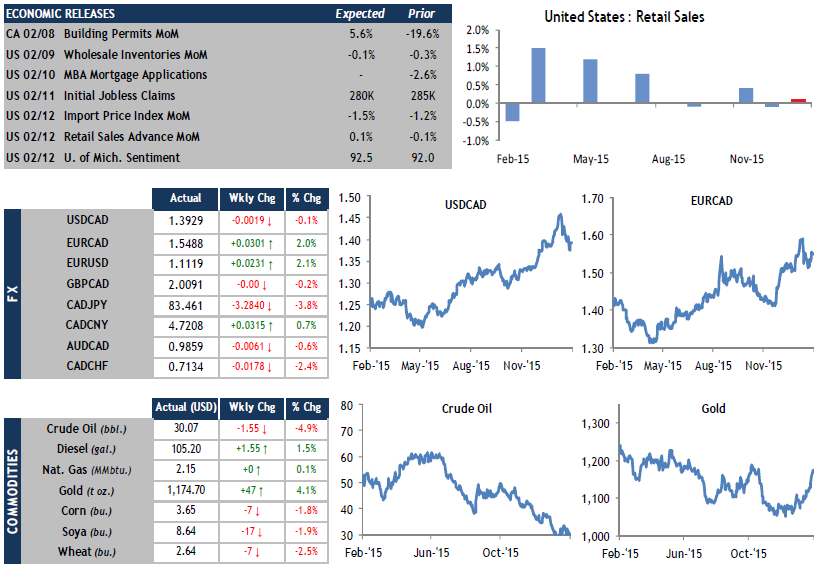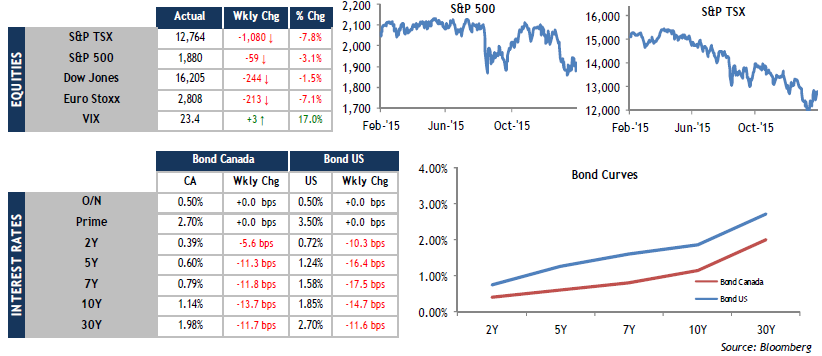Range of the week : 1.3600-1.4200
What a week it was! Buyers and sellers of U.S. dollars were on an emotional rollercoaster last week as the greenback went into an impressive tailspin against the major currencies, only to recover some of the lost altitude by the end of the week. The U.S. dollar dropped over 2.5% in value on the week, the steepest fall since October 2011! What could explain this sudden behaviour? Market watchers offered a few ideas:
• The influence of the slowdown in the global economy;
• The possibility of inaction by the U.S. Federal Reserve;
• A massive liquidation of USD positions.
At first glance it would seem that investors, having taken a growing U.S. economy for granted, have begun to have doubts again. Amid this uncertainty, all market participants were focused on the U.S. employment data released on Friday. Despite a level of job creation that fell considerably short of expectations (151,000 actual vs. 190,000 expected), the greenback suffered a sharp appreciation following the release, one that went virtually across the board. Many market observers attributed this decline to the fact that salaries had increased much more than expected. Since this is a very important variable for FOMC members, any increase in salaries in the U.S. has a virtually immediate effect on the financial markets. Even so, the news had no impact on investors’ expectations regarding the future course of monetary policy. Since the beginning of the year, the implied probability of a rate increase in the U.S. in March has fallen from 55% to 10%.

In Canada, some news items in particular caught the attention of investors. This included the news that the American company Lowe’s, after several attempts, had acquired the Quebec firm Rona for CAD$3.2 billion. This represented a premium of over 100% on the stock’s closing price on Tuesday! Who knows, maybe the negotiations were facilitated by the loonie’s weakness against the greenback. Furthermore, like our neighbours south of the border, Canadian employment data were released. A total of 5,700 Canadian jobs were lost in January, a figure that fell short of expectations. However, over 5,600 Canadians found full-time work, demonstrating that there is some resilience in the Canadian labour market at the national level. Overall, the report did not provide any dramatic news, but it nevertheless confirmed that employers are not hustling to hire new workers.
Commodity prices continued to be highly volatile, with the price of a barrel of oil falling over 13% at the start of the week only to climb back up to over USD$31/barrel at closing on Friday. After Iran announced a major increase in crude oil exports, the mention on Wednesday by Venezuela’s Energy Minister that OPEC member and non-member countries would soon gather for a special meeting gave renewed hope to oil traders. Such a volatile climate caused the Canadian dollar to fluctuate sharply from one day to the next, ultimately ending the week up slightly against the U.S. dollar.
This week we will be paying close attention to U.S. indicators of wholesale inventories and retail sales. We will also have an eye trained on the health of the Canadian real estate market with the release of the building permits indicator and the new housing price index.


